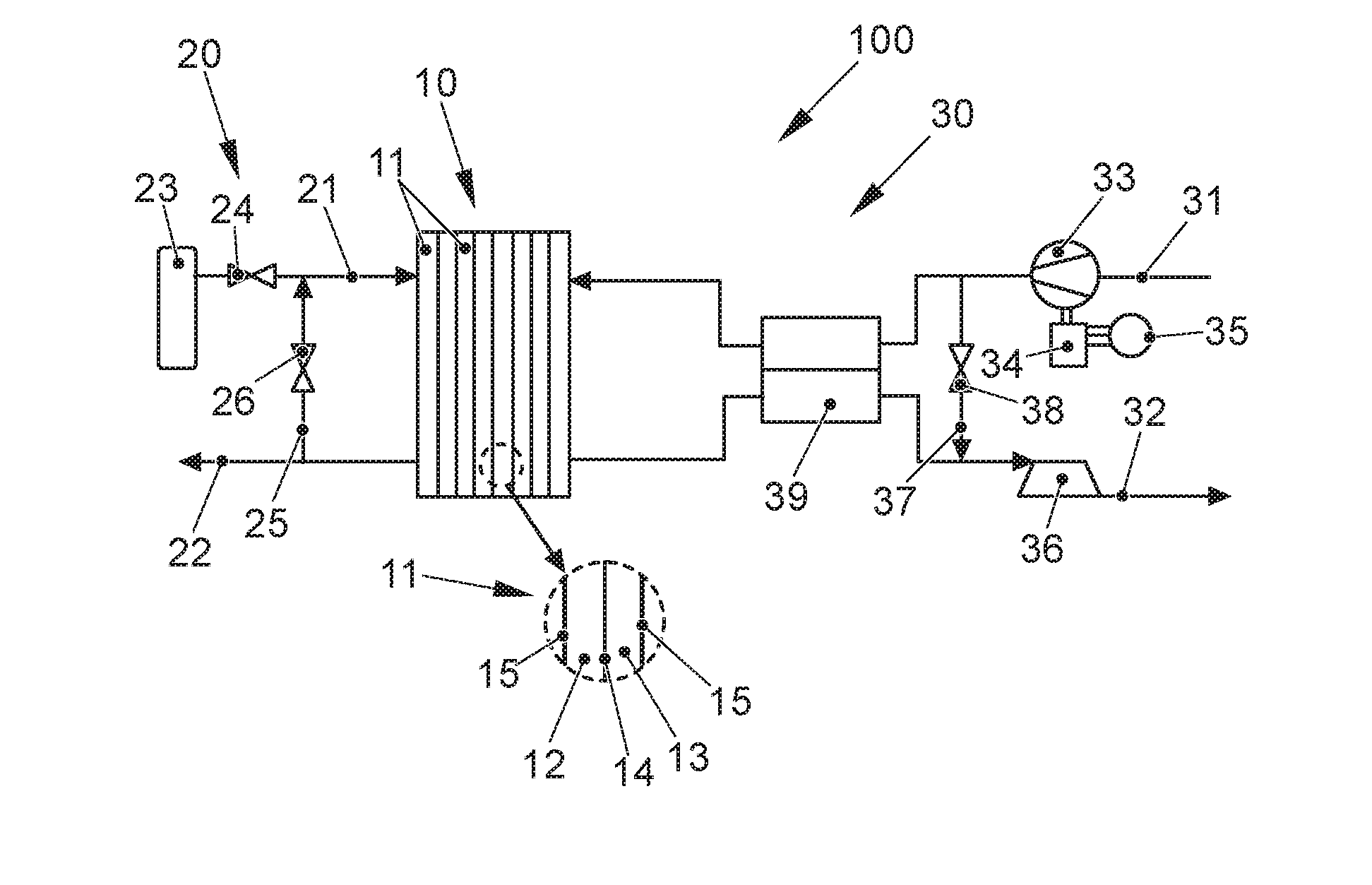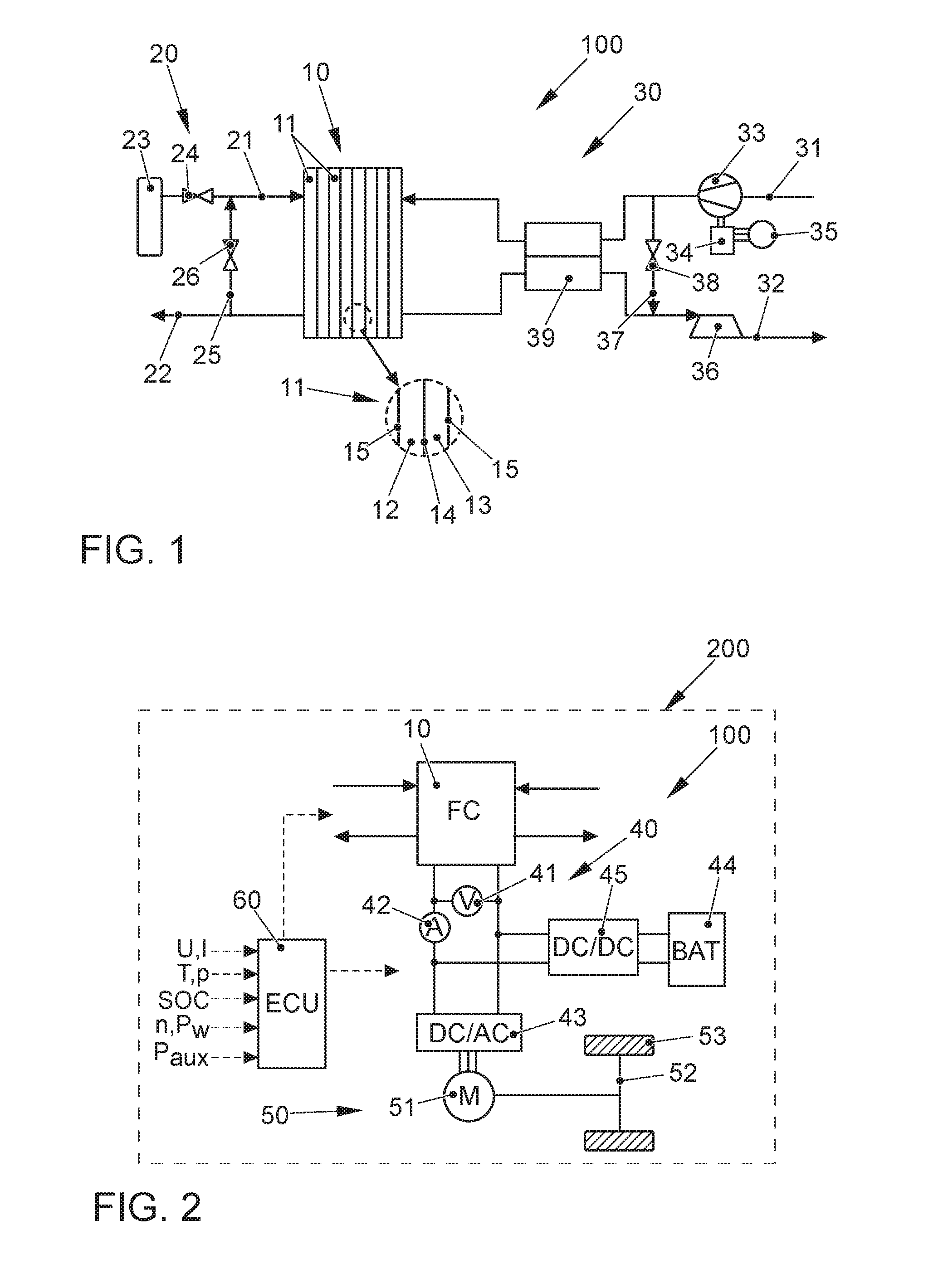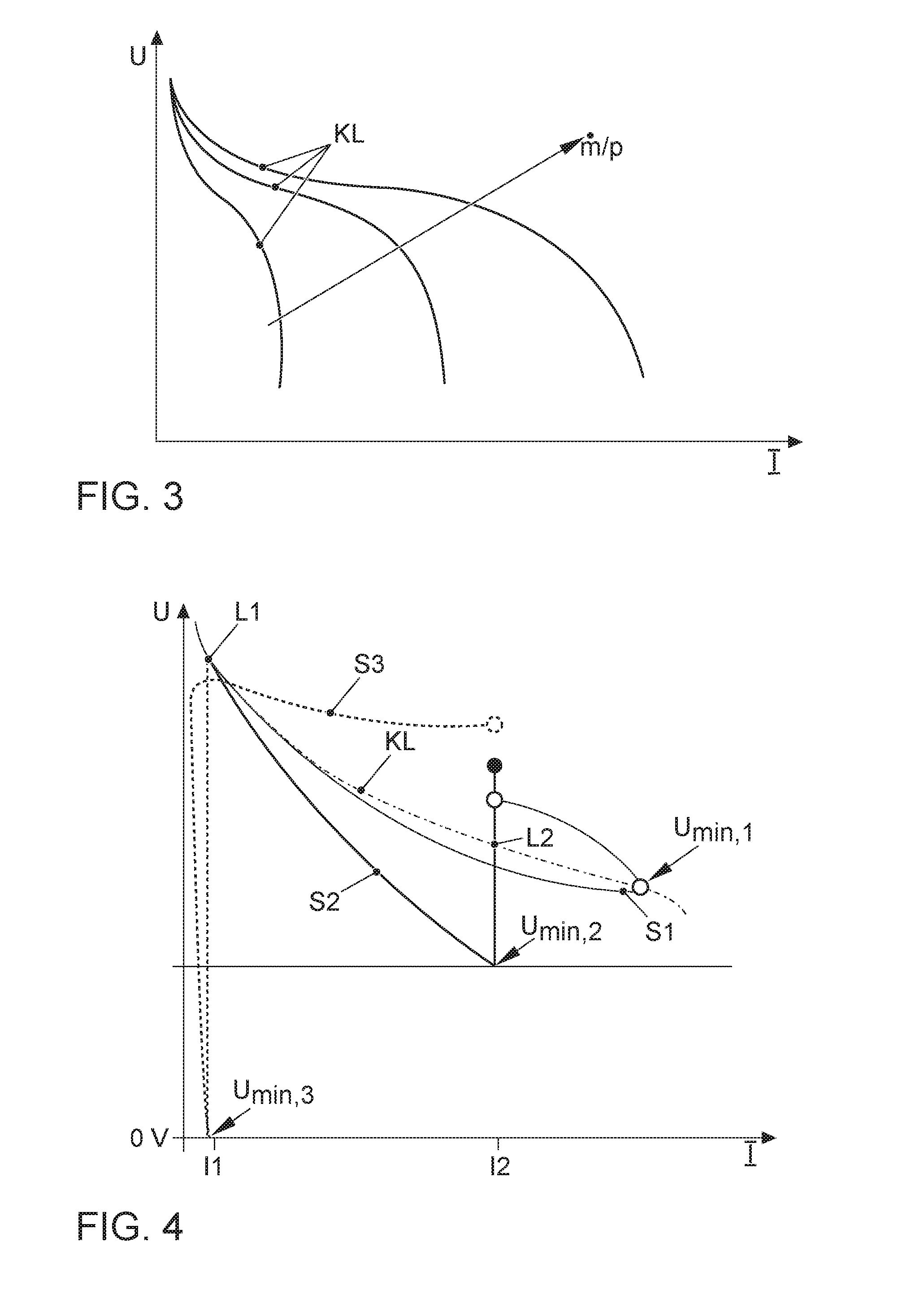Method for controlling an operating point change of a fuel cell stack and a fuel cell system
a technology of fuel cell stack and operating point change, which is applied in the direction of fuel cells, transportation hydrogen technology, climate sustainability, etc., can solve the problems of corresponding power input or energy input, and achieve the effect of reducing the degradation of catalytic materials
- Summary
- Abstract
- Description
- Claims
- Application Information
AI Technical Summary
Benefits of technology
Problems solved by technology
Method used
Image
Examples
Embodiment Construction
[0028]FIG. 1 shows a fuel cell system, indicated as a whole by reference numeral 100, according to a preferred embodiment of the present invention. Fuel cell system 100 is part of a vehicle not further depicted, in particular an electric vehicle, which includes an electric traction motor supplied with electric energy by fuel cell system 100.
[0029]Fuel cell system 100 includes a fuel cell stack 10 as the core component, which is composed of a plurality of single cells 11 assembled in a stack. Each single cell 11 includes an anode chamber 12 and a cathode chamber 13 separated from one another by an ion-conductive polymer electrode membrane 14 (see detailed view). Anode chamber and cathode chamber 12, 13 each include a catalytic electrode, the anode and the cathode, which catalyzes the respective partial reaction of the fuel cell conversion. The anode electrode and cathode electrode include a catalytic material, for example, platinum, which is supported on an electrically conductive ca...
PUM
| Property | Measurement | Unit |
|---|---|---|
| voltage | aaaaa | aaaaa |
| voltage | aaaaa | aaaaa |
| voltage | aaaaa | aaaaa |
Abstract
Description
Claims
Application Information
 Login to View More
Login to View More - R&D
- Intellectual Property
- Life Sciences
- Materials
- Tech Scout
- Unparalleled Data Quality
- Higher Quality Content
- 60% Fewer Hallucinations
Browse by: Latest US Patents, China's latest patents, Technical Efficacy Thesaurus, Application Domain, Technology Topic, Popular Technical Reports.
© 2025 PatSnap. All rights reserved.Legal|Privacy policy|Modern Slavery Act Transparency Statement|Sitemap|About US| Contact US: help@patsnap.com



